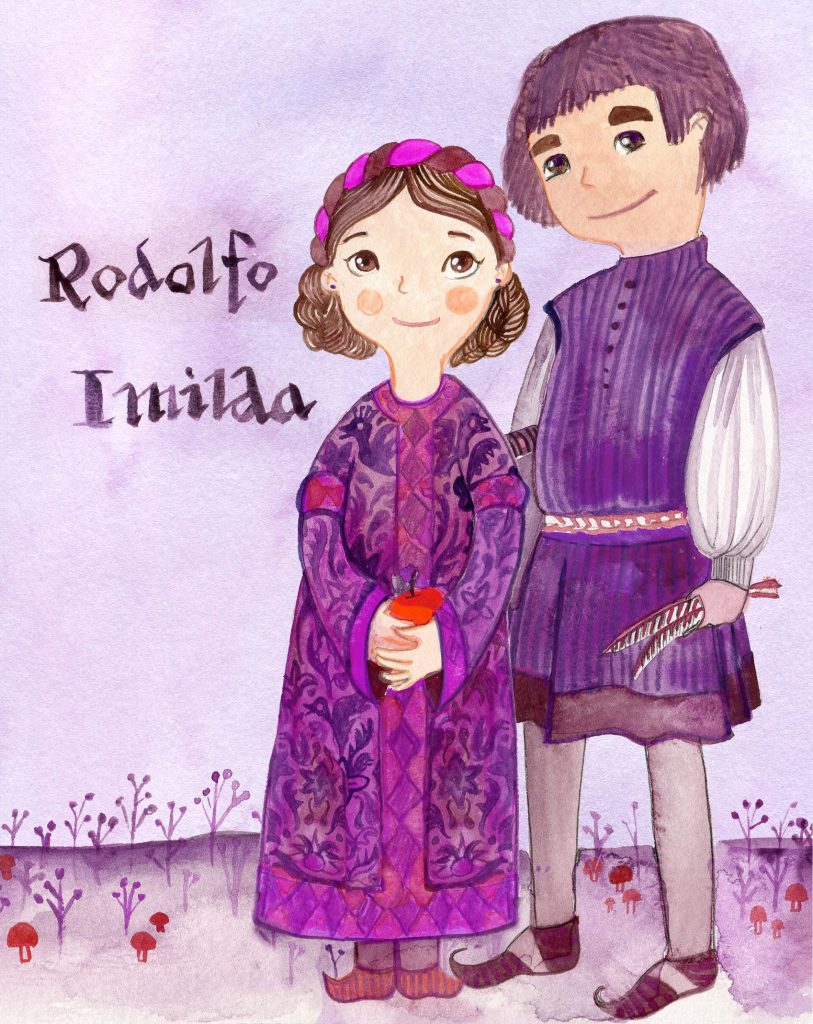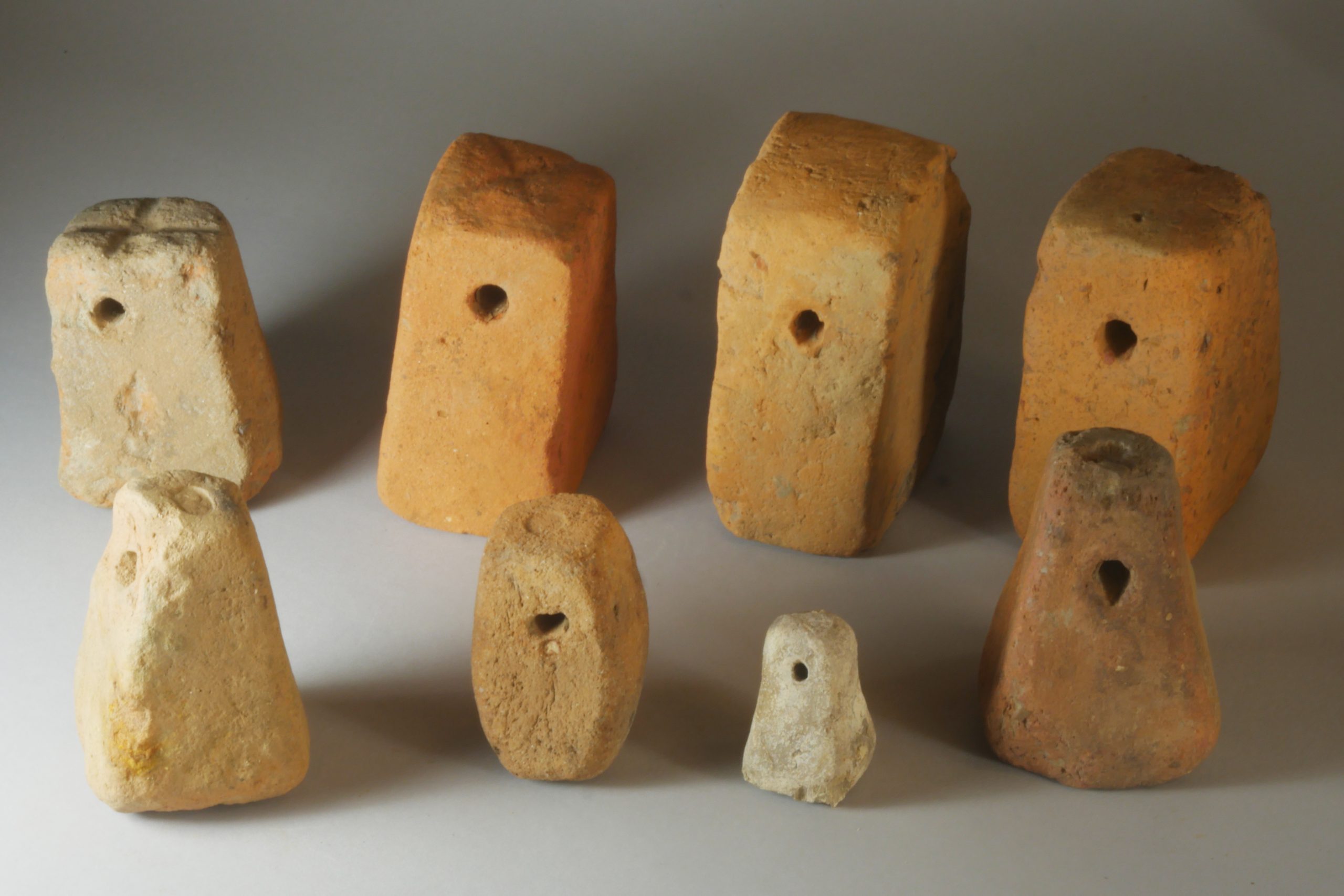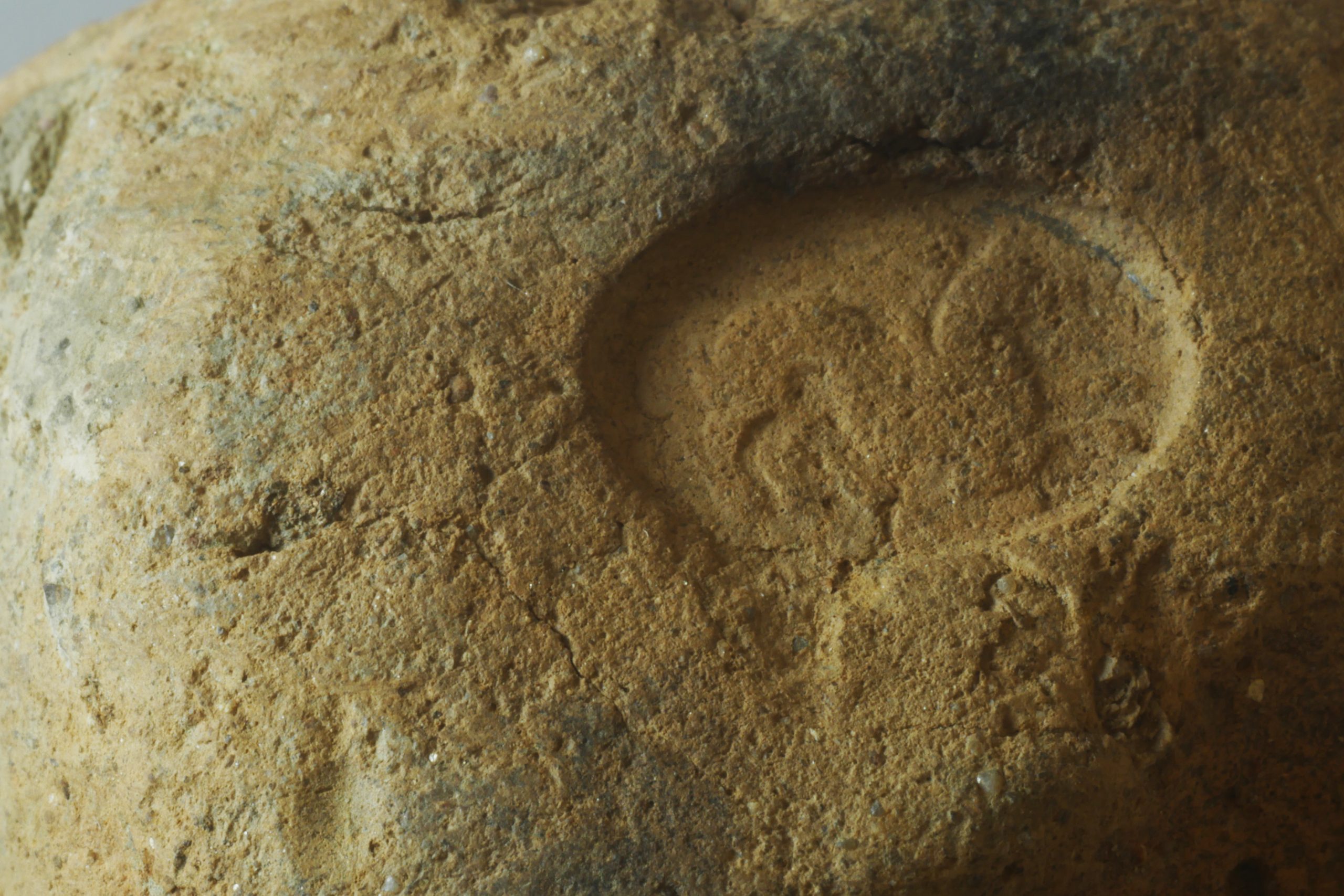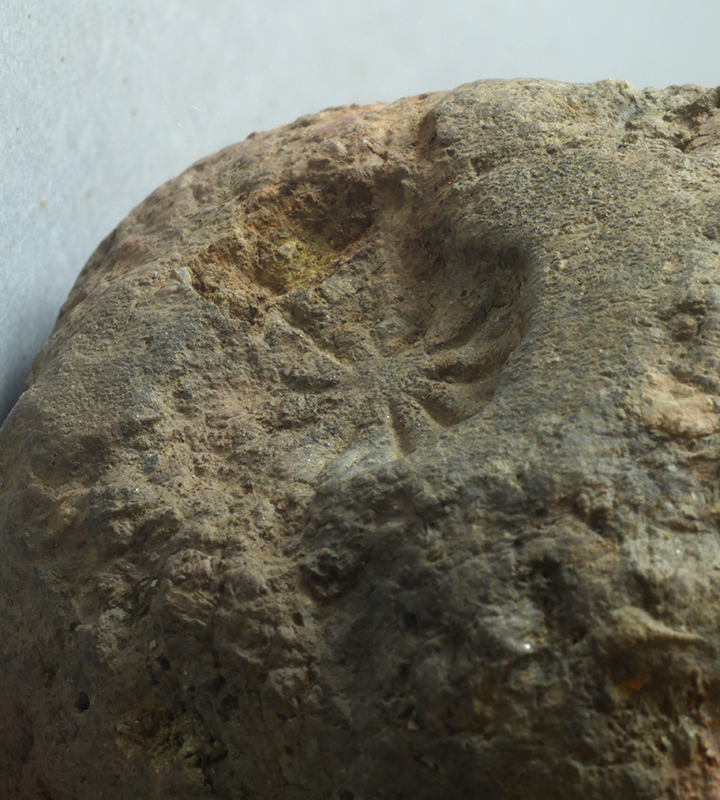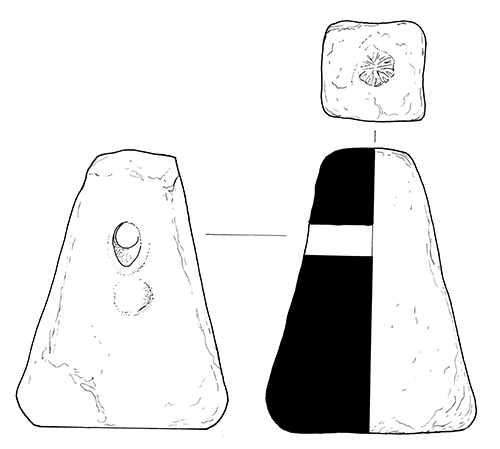
Roman Cetamura
Loom Weights
Period | Roman |
Year | ca. 150 BCE – 68 CE |
Material | Terracotta |
Location | Well #1 |
Numerous weights for the loom have been found at Cetamura, testifying to a long lasting tradition of making textiles in Etruscan and Roman times. Made of baked clay, they have a characteristic shape as a truncated pyramid with a perforation to receive the strings from which they hang. They often have stamps on the top to help identify makers or owners, such as a griffin, a sunburst or a cross.
At Cetamura the standard ancient terracotta weight in the shape of a truncated pyramid with transverse perforation is common, and has been documented previously, especially in the Artisans’ Quarter in Zone II. Few have doubted that the weights were used on a loom to hold downward in a vertical line the threads that would be engaged by the shuttle running on the horizontal.
The sheer number of weights in Well # 1, a total of 42, counting fragmentary specimens, is surprising and is surely not casual. The earliest examples are found in the Etruscan locus 104 of Group III, and an especially dense concentration occurred in loci 99 and 100—all of the Late Etruscan Phase II. But such weights continue to appear until the latest strata of the Roman usage levels and also in the dumping episodes above that, from Late Antiquity and the Middle Ages.
The fabric of most of the weights is the standard local Cetamura Fabric 2, a dense, heavily tempered paste, which is normally smoothed out on the surface. Fourteen of the specimens have a marking of some kind, varying from simple incisions or punches to a stamp of a sunburst and another with a hybrid animal, probably a griffin. The cross-shaped forma quadrans and the X mark are among the most frequent sigla on terracotta weights from Cetamura and elsewhere. Such marks may serve to indicate the maker, or they may be meant to individualize the weight so that the owner could maintain possession of it. One weight seems to have inscribed letters around the perforation, perhaps the Etruscan word ipa, of unknown interpretation.
The weights may be grouped according to size from small (less than 400 g) to medium (400-600 g), large (600-900 g) and extra-large (more than 900 g). Many of these may be confidently identified as weights for the warp-weighted loom. The “extra-large” specimens (5 in all) probably had some other purpose, for example as counterweights in a pulley system for retrieving water from the well. Apart from this usage germane to the working of the well, it seems likely that the weights were votive offerings. The evidence for such weights being used as votives is abundant.
Dating: 2nd c. BCE-1st cent CE
Bibl. Gleba 2008, 127-138. Meyers 2013
Etruscan activities for kids
Meet Lucius & Fulvia
Roman activities for kids

Meet Rodolfo & Imilda
Medieval activities for kids
